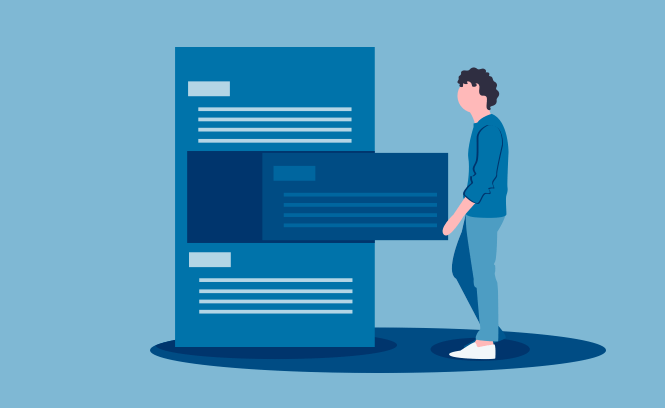Is above the fold still important?

As a dedicated WordPress design agency, we are proud to marry enterprise WordPress development with first-class design, and that has shown itself over the last couple of years, with recognition for our design work with globally recognised award wins.
Nonetheless, the way we design websites has developed and continued to evolve over time, much like designing for the internet has. In an effort to provide more content of this nature, the team will be sharing aspects of designing for the modern web that needs to change, queries that our clients often ask us, and trends and patterns that we’re starting to see. We start with a common question we are often asked at the beginning of a web design project.
What is AtF and is it still important?
The term, above the fold, originates from times of print when newspapers were your primary source of information. In those days, they were often displayed folded, therefore all you could really see was an eye-catching headline and the first paragraph of whatever the story was. As you can imagine, Above the Fold on a website is slightly different, but kind of the same.
Above the Fold now means any part of the website page that is initially visible, before you start scrolling through the sites’ content. What’s above the fold generally sets the tone for what’s to follow, and makes a huge impact on how long the user will stay with you.
The term if anything has become more popular and more widely used with the proliferation of screen time, yet user behaviour has undoubtedly changed since the term was first coined.
Is it necessary?
Above the Fold hasn’t gone away during the digital age. In fact, whilst in the past newspapers would designate their most attention-grabbing headlines and vivid imagery above the fold to allure potential buyers, you could argue that it’s become even more important than ever, with It’s younger cousin, click-bait, having also joined the party.
In the RGB landscape, however, the medium is no longer paper with pre-defined measurements and the buyers (Users) have ever-changing goals and motivations.
Content these days is harder to manage now, as the medium is now a digital screen, of which there are many shapes and sizes. Digital screens offer so much more variation to consider – the layout of websites, the layout of the home page, the size of the screen – so much so, that those managing content need to prioritise information most important to the user -a practice taken from the original interpretation of the meaning, but how does it work in digital?
How does AtF work in digital?
Much like with newspapers though, much of the same rules and best practice apply. From a conversion point of view, your CTA must always be Above the fold (although there are some exceptions to the rule). Copy should be minimal, and each word should mean something. That is to say, not overly positive language (comes across as insincere), or confusing business-speak, but honest, specific, plain-speaking writing.
We all make assumptions on occasion, however, this is not possible when it comes to the users on your website, and you need to know everything you can about them. Why are people arriving at your website? Are you trying to educate them through content, or are you selling them a product or a service? Are you being too presumptuous and too forward by putting your CTA right above the fold? There is a chance that you are, so context is always more relevant than best-practice.
Conclusion – Is AtF still relevant?
Essentially, Yes – above the fold is still important, and still relevant – It’s just more about context now.
Whilst there has been some debate over the importance of the fold, especially in the 93digital offices, the research and the data is actually pretty conclusive – Unless the user is at the ‘education’ stage of the sales cycle, the call to action that converts best is above the fold.
However, the role of content and education, particularly in B2B, means that there is always some form of education about your company’s product or service going on. We’ve already highlighted how the content above the fold sets the scene for the rest of the content below it. If your value proposition is straight-forward, then above the fold is great. If your solution is more technical, don’t push it all above the fold, but what you place there will determine whether your website visitors will carry on scrolling.

Meet The Team: Darren Stewart

Interview series: Richard Gott, Founder, Memberwise
Let's Talk
Do you have a web design and build project coming up that you would like to talk about?